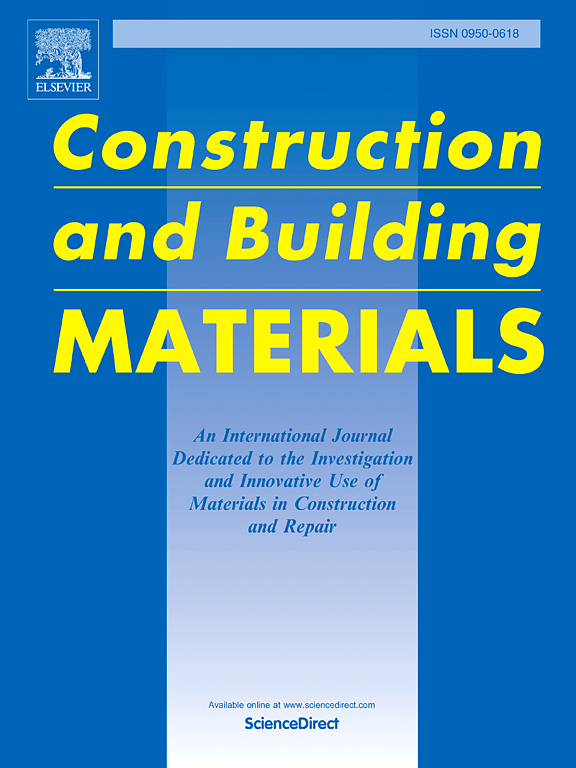无侧限压缩和直剪试验中胶结砂的抗剪强度
IF 8
1区 工程技术
Q1 CONSTRUCTION & BUILDING TECHNOLOGY
引用次数: 0
摘要
胶结砂是由砂和水泥组成的一种材料,具有较高的强度和稳定性,在岩土工程中得到了广泛的应用。虽然三轴压缩试验(TCT)是评估抗剪强度的标准方法,但它既耗时又昂贵。本研究提出了一种简化且具有成本效益的方法,将无侧限压缩测试(UCT)与相机视觉技术相结合,以估计抗压和抗剪强度参数。采用UCT和直剪试验(DST)对水泥掺量为10%的胶结砂样进行了测试。提出了一种基于摄像机的UCT破坏面角测量方法,实现了内摩擦角和黏聚力的估计。结果表明:压缩强度和刚度对孔隙比高度敏感,内摩擦角保持相对稳定;UCT得到的内聚值与TCT得到的内聚值吻合较好,验证了该方法的可靠性。相机视觉与UCT的集成允许对材料行为进行更有效和全面的评估。通过与TCT、DST及前人研究的对比,验证了该方法的准确性、重复性和实用性。它在测试各种岩土材料(如土壤、胶结砂和混凝土)方面具有广泛的潜力。本文章由计算机程序翻译,如有差异,请以英文原文为准。
Shear strength of cemented sand in unconfined compression and direct shear tests
Cemented sand, composed of sand and cement, is widely used in geotechnical engineering due to its high strength and stability. While the triaxial compression test (TCT) is a standard method for evaluating shear strength, it can be time-consuming and costly. This study proposes a simplified and cost-effective approach by integrating unconfined compression testing (UCT) with camera vision technology to estimate both compressive and shear strength parameters. Cemented sand samples with 10% cement content were tested using UCT and direct shear tests (DST). A novel camera-based technique was used to measure the failure plane angle in UCT, enabling the estimation of internal friction angle and cohesion. The results show that compressive strength and stiffness are highly sensitive to the void ratio, while internal friction angle remains relatively stable. Cohesion values obtained from UCT closely match those from TCT, confirming the reliability of the proposed method. The integration of camera vision with UCT allows for a more efficient and comprehensive evaluation of material behavior. The method has been validated through comparisons with TCT, DST, and previous studies, demonstrating its accuracy, repeatability, and practical applicability. It holds strong potential for broader use in testing various geomaterials such as soil, cemented sand, and concrete.
求助全文
通过发布文献求助,成功后即可免费获取论文全文。
去求助
来源期刊

Construction and Building Materials
工程技术-材料科学:综合
CiteScore
13.80
自引率
21.60%
发文量
3632
审稿时长
82 days
期刊介绍:
Construction and Building Materials offers an international platform for sharing innovative and original research and development in the realm of construction and building materials, along with their practical applications in new projects and repair practices. The journal publishes a diverse array of pioneering research and application papers, detailing laboratory investigations and, to a limited extent, numerical analyses or reports on full-scale projects. Multi-part papers are discouraged.
Additionally, Construction and Building Materials features comprehensive case studies and insightful review articles that contribute to new insights in the field. Our focus is on papers related to construction materials, excluding those on structural engineering, geotechnics, and unbound highway layers. Covered materials and technologies encompass cement, concrete reinforcement, bricks and mortars, additives, corrosion technology, ceramics, timber, steel, polymers, glass fibers, recycled materials, bamboo, rammed earth, non-conventional building materials, bituminous materials, and applications in railway materials.
 求助内容:
求助内容: 应助结果提醒方式:
应助结果提醒方式:


